For the collaborative final project, the Salmon Creek Journal, my role is communications/social media. As a team, we’ve been advertising the Salmon Creek Journal and posting a submissions code for students to submit work for our project (in which I helped create the A-Frames and placed them around campus). For today’s class (11/29), we will be connecting together as a team to talk in detail about each of our roles/tasks. We will also be sharing our ideas on how we would like the framework of the website to look like before talking about specific tasks needing to be done.
Author: fbrown22
Project Gutenburg – The Works of Horror
The Most Horrible Story by John W. Jakes
https://www.gutenberg.org/files/65727/65727-h/65727-h.htm
The Most Horrible Story follows Thompson, who is first shown in a plain room with an old man (who is called old man throughout this short story). Based off their conversation, it appears Thompson has signed up for the horror book club and is taken to a reading room where he can read a book made of human skin. As they walk down a hallway with doors lining both sides of the pair, Thompson hears screaming to which the old man waves off stating that they are reading the most horrible horror story. This intrigues Thompson who continues to follow the old man who leads him to his own room. Once the old man closes the door, Thompson reads the story to which he becomes horrified and screams like the others. He tries to call the old man to release him from the room as it was locked and the old man refuses, stating that Thompson is a member now. He rereads the book over and over again and continues to scream which reveals that the book simply said “You’re dead.”
Flowering Evil by Margaret St. Clair
https://www.gutenberg.org/files/64745/64745-h/64745-h.htm
This short story follows Aunt Amy who collects and cares for rare, extraterrestrial plants in the hothouse that her nephew, Robert, sends to her whilst he’s out on space missions. Her best friend, Captain Bjornson, continuously reminds Amy to be wary of her newest plant, Rambler, to which Amy gets upsets and shuts him down. Weeks pass before the two meet again and Amy mentions how she’s been getting bloody nightmares of dead animals. Bjornson is suspicious of the Rambler to which Amy, again, becomes upset and shuts him down. She continues talking about how she doesn’t know what to cook for Robert’s return and is planning on some sort of meat dish. Night comes and Amy decides to do soap cutting to help her mind at ease and try to inspire herself on what dish to cook for Robert. She becomes dizzy and suddenly remembers she hasn’t checked her plants yet and makes a blind run for the hothouse where the plants are located. Outside the hothouse, she sees two dead cats, similar to the dead rabbit in her dreams, and she wonders why she made a blind dash for the hothouse all of a sudden. She realizes too late as her feet blindly take her inside the hothouse where the Rambler is waiting with a sharp branch to suck her blood. It begins sucking her blood and it’s greediness causes it to lose it’s mind control on Amy for a bit, who takes advantage by throwing a soap at the plant and aims to stab it. The morning after shows Amy, Captain Bjornson, and Robert eating a meat dish that Robert has never tasted but is obsessed. It’s hinted that Aunt Amy is feeding them the Rambler.
The Future of the Book
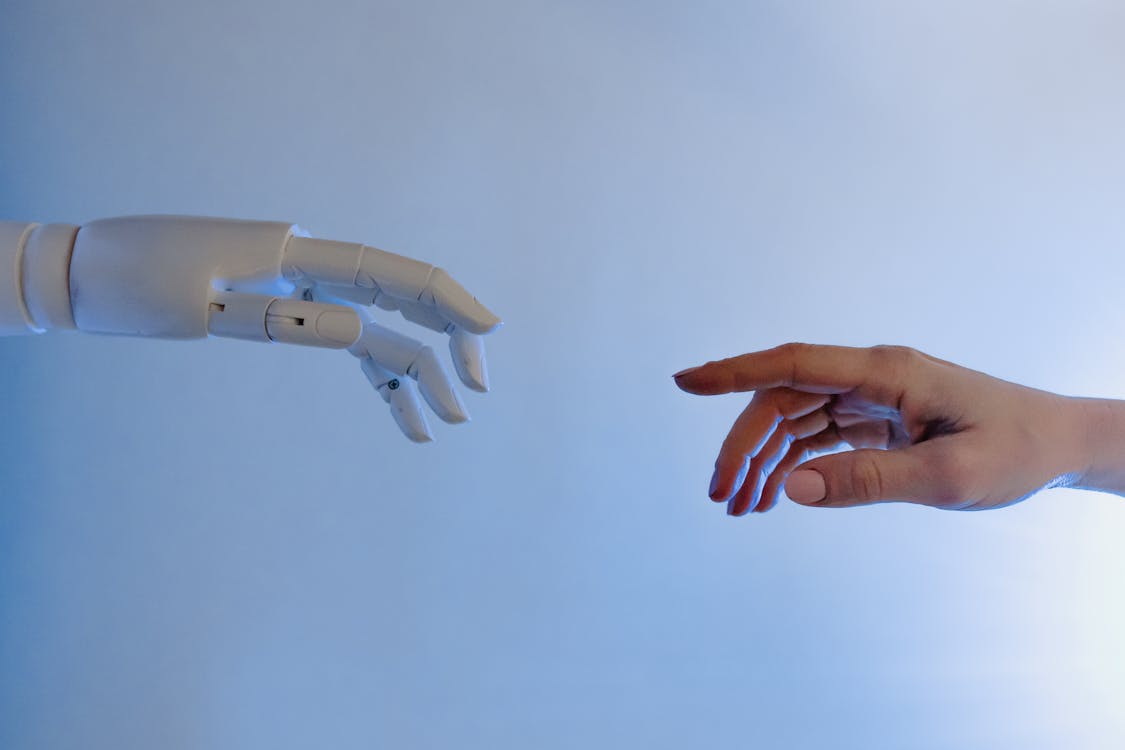
The year is 2053. Specifically, 20 September 2053. Thirty years since I was a university student talking about digital publishing and its bright future. Who knew the culture of storytelling would develop drastically into what it is now? I sure as well didn’t. Why am I suddenly reminiscing about some random university course I took 30 years now? Well, with my involvement in graphic design and digital publishing, I was able to get my hands on a VR prototype that enhances one’s senses on digital books a few years back and just a few weeks ago I bore witness to the release and rise of VR in pop culture, specifically, for digital books.
I guess I should’ve seen this coming, technology has been integrated into our society for decades and the rise of webtoons and interactive storytelling back then should’ve been a hint. Maybe I did notice but didn’t want to in fear of some sort of dystopian society straight out of those sci-fi movies? I don’t know. Who cares; when the future is present, what’s done is done.
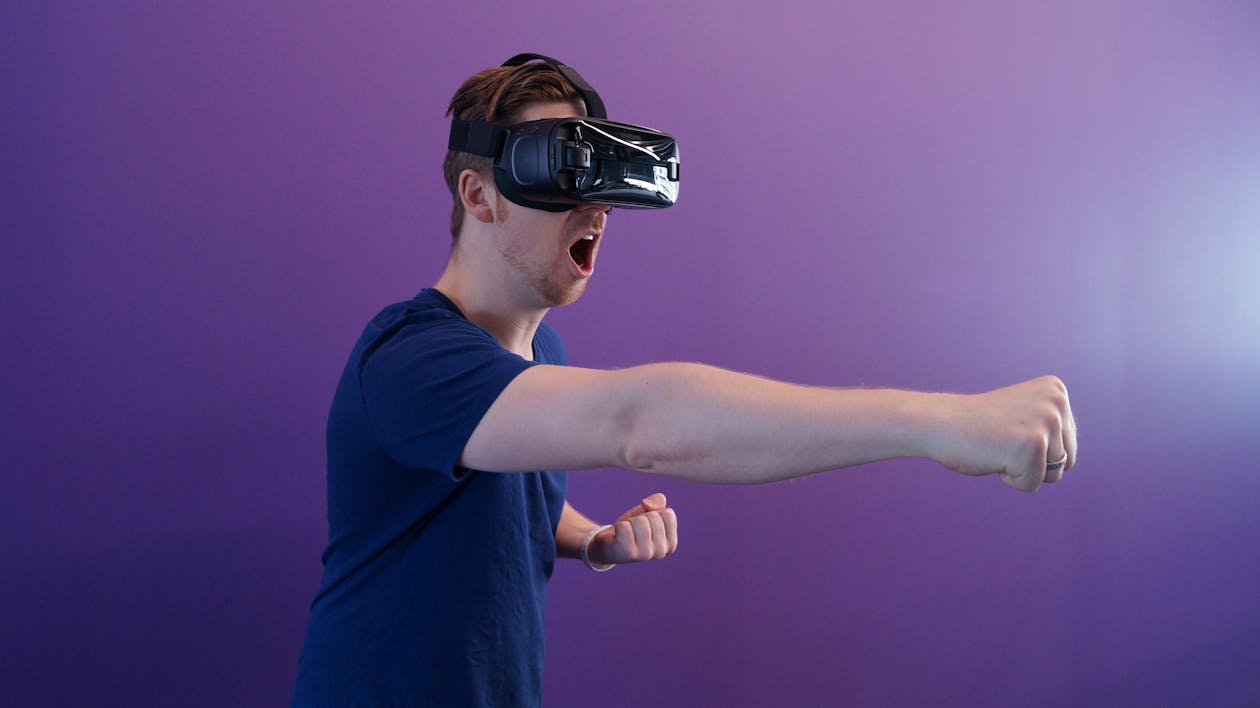
Either way, it’s crazy to see how far digital books have come and the grasp it has on society now. It looks straight out of those dystopian sci-fi movies I used to be scared of as a kid. On the large electronic ads across cities, you’re constantly faced with a person wearing VR goggles and a large smile peeking under as they wave their arms frantically like they’re balancing on a tightrope. Or that one guy whose mouth is in a straight line as his arms are held close to his body, like he’s holding a gun. Or even that one viral clip of the old lady who didn’t know she was reading a horror book and when a ghost popped up in front of her face, she screamed and fell. VR has been around but with the rise in digital books being published on an archive similar to Steam, even those hiding away in their rooms reading were brought out to enjoy VR and AR with everyone.

Nothing much has changed with VR, only the expansion of opportunities for digital books. In VR, there’s an archive much like steam, except for digital books that many artists can publish. From small creators to large companies, anyone can publish their books into the archives for the public to read and experience. One of the larger differences is the additional technology accessories created to accompany the VR. Now, there’s upgrades on head, hand, eye, and body tracking so when you read and experience the book, the characters around you are more attuned to your very own actions, making it as if they actually exist and they have realistic responses to your actions. There’s also voice activation; as you’re reading something out loud or making a choice, your voice is being recorded to interact with the story’s progress. It’s crazy! I really couldn’t believe I’m experiencing the future. It’s as Borusk said all those years ago, “The book, distributed across them, becomes a multimedia and multi-navigable space: a virtual reality layered onto our own” (Borusk, 124).
Works cited
Borusk, Amaranth. The Book. MIT Press, 2018.
Note:
Storytelling has had a social and cultural impact for thousands of years, we see them in the form of visual drawings along caves and we hear them orally from person to person. With technology, we are able to mix the two and create a more immersive experience for readers across the world and even expand through time. But how much further can we take with digital books?

I don’t know why, but I admit I had a hard time writing as if I’m 20-30 years into the future and comparing books in the future to back then and so I wanted to write this side-note to sort of go explain what I envisioned (or, at least, hope to see) the future of digital books 20 to 30 years from now. In my future writing, I wanted to take a unique turn and envision myself to be slightly fearful of the future in which I look towards a dystopian sort of society where the people have been completely obsessed with VR technology (kind of like the movie, Ready Player One). While I see a bright future of digital publishing, I thought it would be fun and a challenge to see it as something that could be a downside of the future, especially with the rise in controversy of social media and who’s in charge of them.
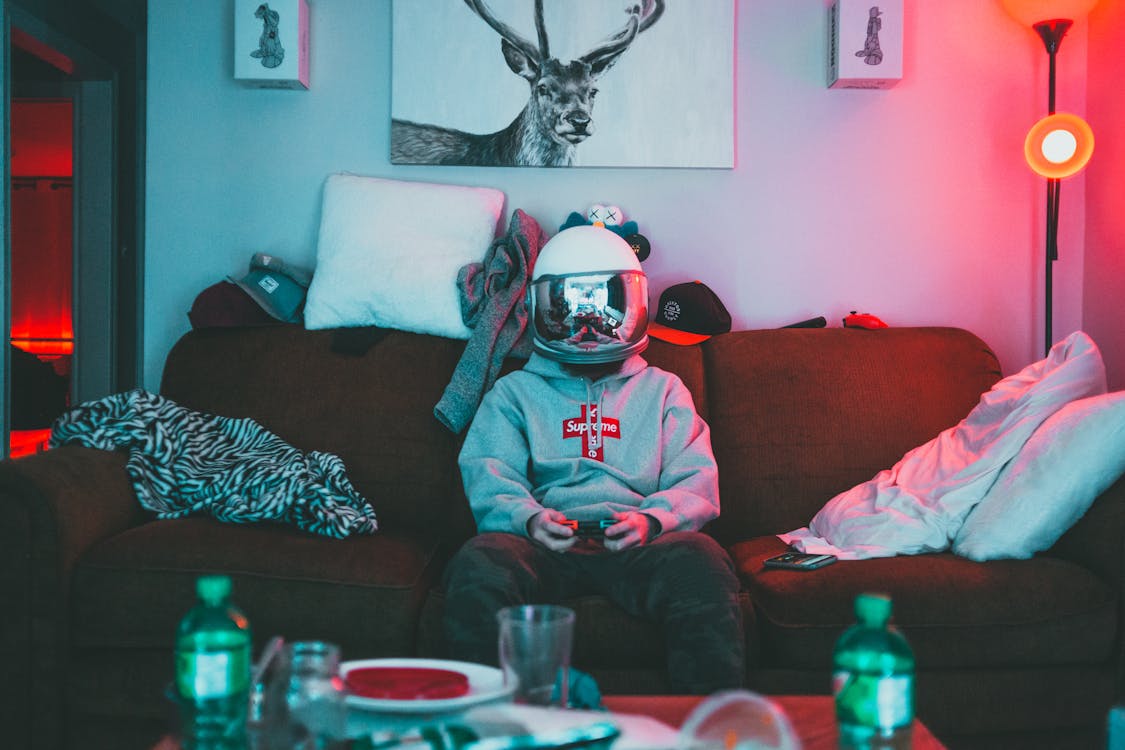
In about 20-30 years, I see digital books creating an immersive space that enhances the reader’s senses. Specifically, I see visual elements whether that be animation or drawings in play, sound effects and voice acting, and even enhancing your sense of touch through vibrations. This idea stems from webtoons. Webtoons are digital comics you can read on the computer or your smartphone and originated from South Korea. It started out as digital comics but as time passed and technology has advanced, authors have begun to use technological resources given to them to add effects to their comics. They’ve added auditory effects such as music and sound effects, visual effects such as animations, and even added vibrations to connect with your sense of touch. One webtoon example that uses all of these effects is a horror webtoon called Shriek. In the story, you would get scary animations of ghosts crawling towards you, ominous music as you read, and random vibrations to scare you. Readers in the comments have expressed their delight at how these effects have helped create a spooky and unsettling atmosphere that pulled the screen closer to their face and sent shivers down their spine. By building off of that experience, I want to see a future where we add that element Webtoon creates to one’s whole entire physical being. By doing so, I want to elaborate on virtual reality in which I mix gaming and webtoons.
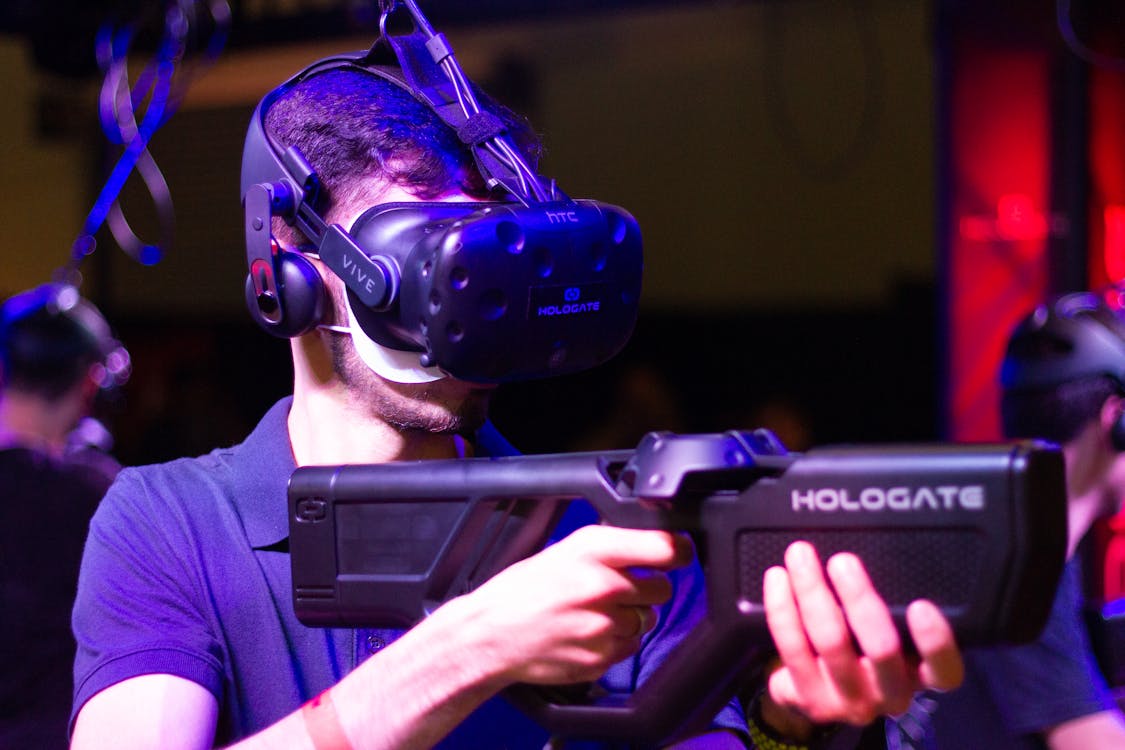
At first, I had a hard time deciding how I envision digital books without crossing the line towards gaming but then I realized video games are simply another way of storytelling. With that realization, I wanted to explore video games which are a great source of interactive storytelling and see how I can mix the two to develop into something greater in 20 to 30 years. Virtual reality is a simulated experience designed to enhance your senses and pull you into another reality. Some elements it has includes head/hand/eye tracking and some even have voice activation and pads or vests to put on so you feel vibrations while playing a game. I want to use these ideas and see how far we can go with digital publishing. I also wanted to talk about augmented reality but felt virtual reality would best fit my vision while connecting digital books.
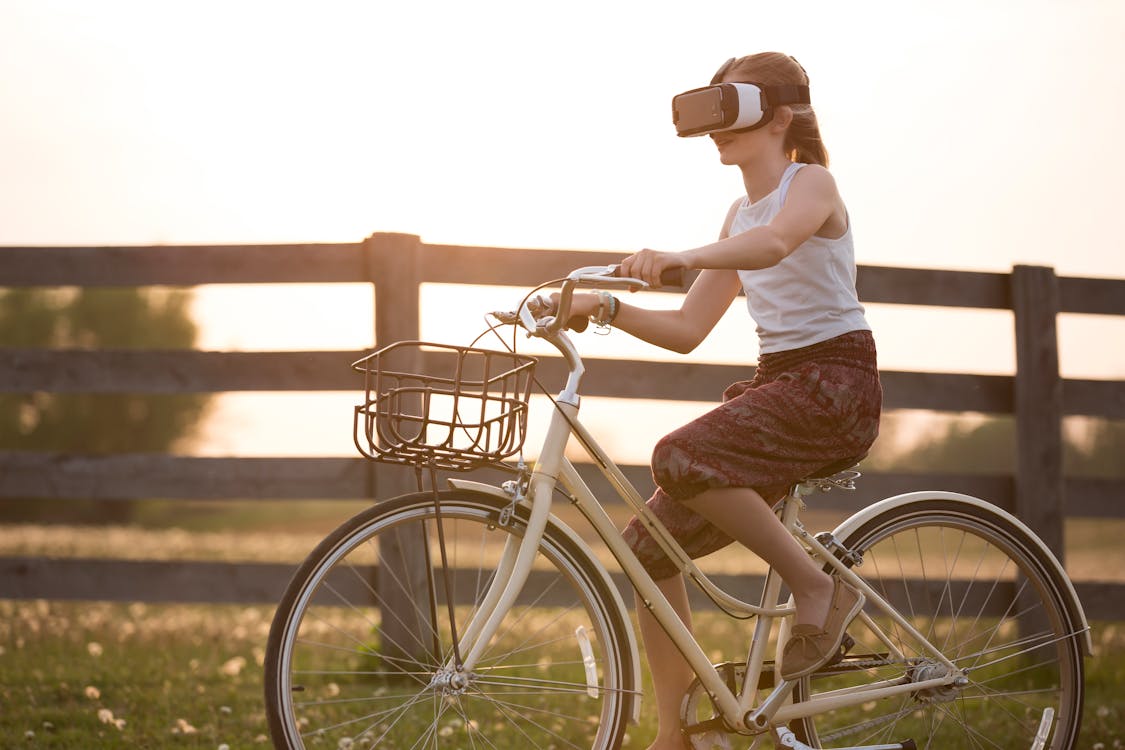
If I were to list a specific example of my vision, I see VR expanding their technology to encompass digital books as well. You can use it at home or even visit a building where a company rents out large rooms for you to use (kind of like escape rooms) and walk around freely. When you put on the headset and vest, you’re in a sort of archive library full of different worlds and stories created by small creators to large scale companies. These stories range from adventure, horror, fantasy, romance, mystery, etc. that you can select from. Once you choose a story, you’re transported into its world where you can choose to be the main character and make your own choices (like the latest game, The Quarry) or be in the world but watch the story unfold (kind of like those 4D movie theaters that place you in the movie. Your head movements, body movements, and eye movements can affect the dialogue (for example, you putting up your fists can indicate the choice of fighting). You can read out loud the dialogue to progress the story and communicate with the characters as if you’re really talking to them. Some examples of voice activation are those horror games where if you speak into the mic, the monster can hear you (for example, Escape the Ayuwoki) or even reading the dialogue can prompt scenes to unfold (ex. Midnight Evil). With the vest, it releases vibrations/sensations to further enhance your physical experience of the story. For example, a character gives you a pat on the shoulder, you can feel the steady thumps on your shoulder in real life. Or maybe you’re playing a horror game, walking through the dark and eerie hallways of an abandoned house alone. Suddenly, you feel a shiver down your back and the grab of your arm that you can feel in real life. The quiet creeks of the floorboards, dark vision only illuminated by a dim flashlight, and the feeling of someone right behind you would surely enhance your spooky experience within the story.
Overall, what I envision when it comes to the future of digital books is a very bright future. I see the integration of digital books and video gaming to create an enhanced version of webtoons and the expansion of video games/movies. I wanted to focus on enhancing the reader’s senses as one of the main developments when it came to the future of digital storytelling.
Photos courtesy of Pexels.
Post-Artifact System
“The digital artifact, therefore, is a scaffolding between the pre- and post- artifact systems.”
Mod’s perspective on post-artifact is a very interesting set of ideas. First off, Mod introduces the three systems of books: the pre-artifact system, the system of the artifact, and the post-artifact system. The pre-artifact system is where the book is made. The artifact is the book and the post-artifact system is when we interact with the book. One thing I like in the reading is how Mod asks ‘How do we change books to make them digital?’ And ‘How does digital change books?’
The digital artifact is a bridge between pre- and post- artifact systems in which it carries the elements of a book but can constantly change.
“When you look at the same digital book tomorrow, it may very well be different from the version you read today…For only the briefest of instances — seconds, perhaps, for popular authors — does the digital edition of a book exist in this static, classic, ‘complete’ form.”
As I reflect on my own experience with using the web as a source of information and entertainment, I realize just how fast-paced it is as the web is constantly changing to fit the present/future. While similar to books in which I can browse and read, post-artifact systems give me a chance to interact and engage with other real people’s thoughts and feelings, I am able to teach and learn from others in a fast-paced environment, such as Wikipedia, as mentioned by Mod. Wikipedia is compared to encyclopedia’s and is often changing unlike the physical capabilities of encyclopedias. One experience I thought of when hearing how the web can constantly change is updates on information, the change of views from the public on what they deem appropriate or not, etc.
The Book
“It can be one of those things, but only if those choices are interrogated and integrated into the way the work makes meaning” (Borsuk, 122).
I see a fairly bright future for digital books and publishing. Rather than see it as a competition to physical books, I see it as a great opportunity to explore elements that can further enhance a book’s meaning and be that expansion for creators who want more.
Digital publishing, while losing some interactions on your sense of touch, can enhance your other senses.
One large example I like to bring up when talking about digital books are webtoons. Webtoons are digital comics. Webtoons have become popular within pop culture and I can see why.
Some artists take advantage of using digital publishing by creating elements to go hand in hand with their works to give a more immersive experience for readers and make their world come to life. For example, some webtoons play music in the background as you scroll through the pages. Other webtoons use animations to animate certain scenes.
One webtoon I like to share is a horror webtoon called “Shriek” by various artists. Each story is a different horror story but what’s most interesting is the use of technology they use. It has scary music and sound effects playing at certain times, your phone vibrates to scare you, there are animations on certain scenes, and some webtoons have a fake pop up text notification from the ghost. It makes the story immersive and popular amongst readers.
I guess overall my thoughts on digital books and publishing is fairly bright, especially if digital books like the one I mentioned is just the beginning. I can see that technology can enhance a reader’s experience and really help them dive deeper into the author’s world.
Favorite Book
I actually decided to share two of my favorite books as I’m not sure if my first one would count.
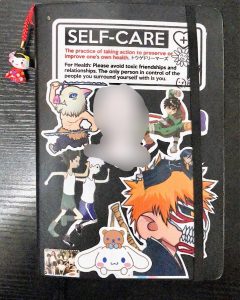
The first book I have chosen to be my favorite is actually my log book. This book is simply a sketchbook I bought and transformed to be a book full of memories and adventures I have been on. From concerts, to picnics, movies, and more, each page is custom and never the same. It’s full of drawings, writings, stickers, photos, receipts, tickets, and so much more.
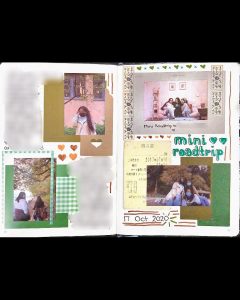
This book is special to me because it contains my personal memories and thoughts that I wish to cherish. It’s unique because it’s created specifically for me and so it is one of a kind. Since I put so much time into each page and overall thoughts, I will say it’s the contents, design, and personal narrative that means so much to me. It’s very much alive in my imagination even though it’s a non-living thing because it contains my memories and proof that I am a living being experiencing feelings and memories.
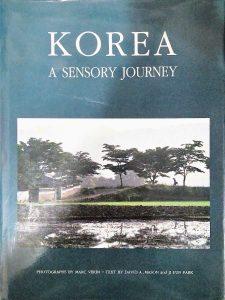
The second book I wanted to add is a photography book, the one I am sharing is called Korea: A Sensory Journey with photographs by Marc Verin and text by David A. Mason and Ji Eun Park.
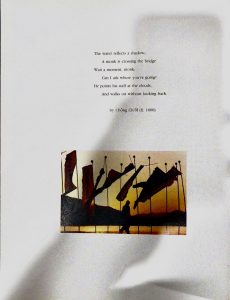
A monk is crossing the bridge.
Wait a moment, monk;
Can I ask where you’re going?
He points his staff at the clouds,
And walks on without looking back.
This book explores South Korea through mainly photographs with poetry and short text as support.
I chose this book because photography is one of my passions and I aspire to create my own photography/art book to release and share with others. This photography book is actually one of the first ones I bought and I have so many more from Hawaii, to Canada, and even the PNW.
This book is special to me especially through its design. It really opened my eyes to a passion (photography) I didn’t realize I had and I didn’t know there were photography books that also carried literary art.
This book (mostly photography books in general) is alive in my imagination even though it’s a non-living thing because I realize that these photographs and poetry captions were created by a specific person through their specific lens. I’m able to see how they view the world through visual arts as well as see the world in a different lens.
Introduction
Hello! My name is Faafetai and I’m looking forward to be a part of this class with y’all for this semester.